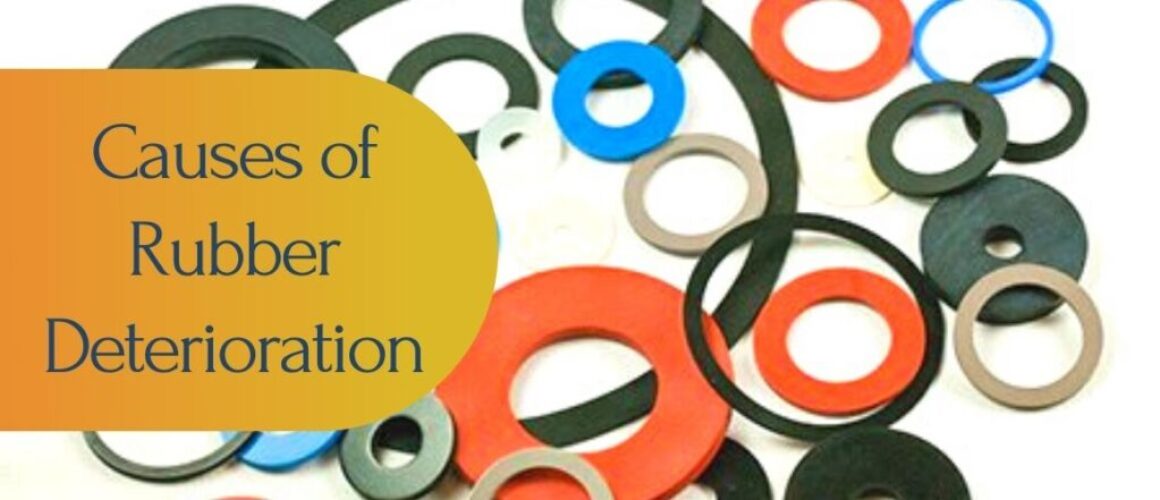What causes Rubber to Deteriorate?
Rubber is a polymer-type material, that can stretch and shrink. Commonly rubber is two types natural rubber and synthetic rubber on an industrial scale. It is wonderfully useful and malleable material. Like other materials though, rubber degradation will eventually occur over time due to common environmental factors like light, heat, and ozone-related environmental changes. Typically, it can impair the functionality of critical rubber parts, like Rubber O-rings, seals, gaskets, washers, grommets, and other rubber parts that could lead to machine failure.
What is rubber deterioration?
The term deterioration refers to the action or process of becoming impaired or inferior in functioning, condition, or quality. Rubber deterioration is a process of becoming impaired in industrial rubber parts. Rubber deterioration can happen due to various factors, such as light, heat, oxygen, and other environmental factors. Its greatest impact is typical with industrial rubber parts like rubber seals, gaskets, and o-rings.
Causes of Rubber Parts Deterioration
There are some environmental factors that can physical and chemical changes to rubber seals. The effects of Light damage are referred to as UV degradation and can cause the rubber to become hard, crack, and even fade in color. The heat can shorten the molecular chains which causes the material to stretch once cooled down. The continuous expansion & contraction lead to the same issues that light exposure causes. And the oxygen attacks the double bonds in rubber chains, which leads it to deterioration. While each of these issues causes damage to rubber seals, It can be prevented by the right preparation.
Also Read: How To Improve Service Life Of Rubber Parts?
How to Prevent Rubber Deterioration?
When rubber products are started to manufacture, a computer-based modeling technique known as Finite Element Analysis(FEA) is used to predict the response to stress-strain of rubber material. The Finite Element stress analysis illustrates whether a proposed design will properly function to design specifications prior to manufacturing a mould tool. It can help to prevent rubber deterioration in the long term but still the end-user need to properly care for every rubber seal to ensure the last. It will help you to save significant costs. Also, it should be stored in a cool, dry, dark, and oxygen-free space. These are the most reliable conditions to store rubbers seals.
When rubber products are started to manufacture, a computer-based modeling technique is known as Finite Element Analysis (FEA). FEA is the process of simulating the behavior of a part or assembly under given conditions used to predict the response to stress-strain of rubber material. The Finite Element Analysis (FEA) stress analysis illustrates whether a proposed design will properly function to design specifications prior to manufacturing a mold tool. It can help to prevent rubber deterioration in the long term and provide significant cost savings.
There is some right rubber restoring techniques, it would be a sufficient level of care and maintenance. Rubber seals and certain polymer products can often be brought back from the brink of failure and restored to functionality. Follows are some simple and practical steps on how to prevent rubber deteriorationto restore your rubber seals to their former glory:
Step 1: Properly clean the area around the rubber seal, including water, dirt, or any other debris.
Step 2: Clearly scrub off the excess grime or hardened debris.
Step 3: Use an optimal conditioner for the seal you are hoping to revitalize.
Step 4: Apply conditioners on the rubber seal as per instructions.
Step 5: Properly rub off the damaged areas using a file & reapply the conditioner for optimal restoration.


